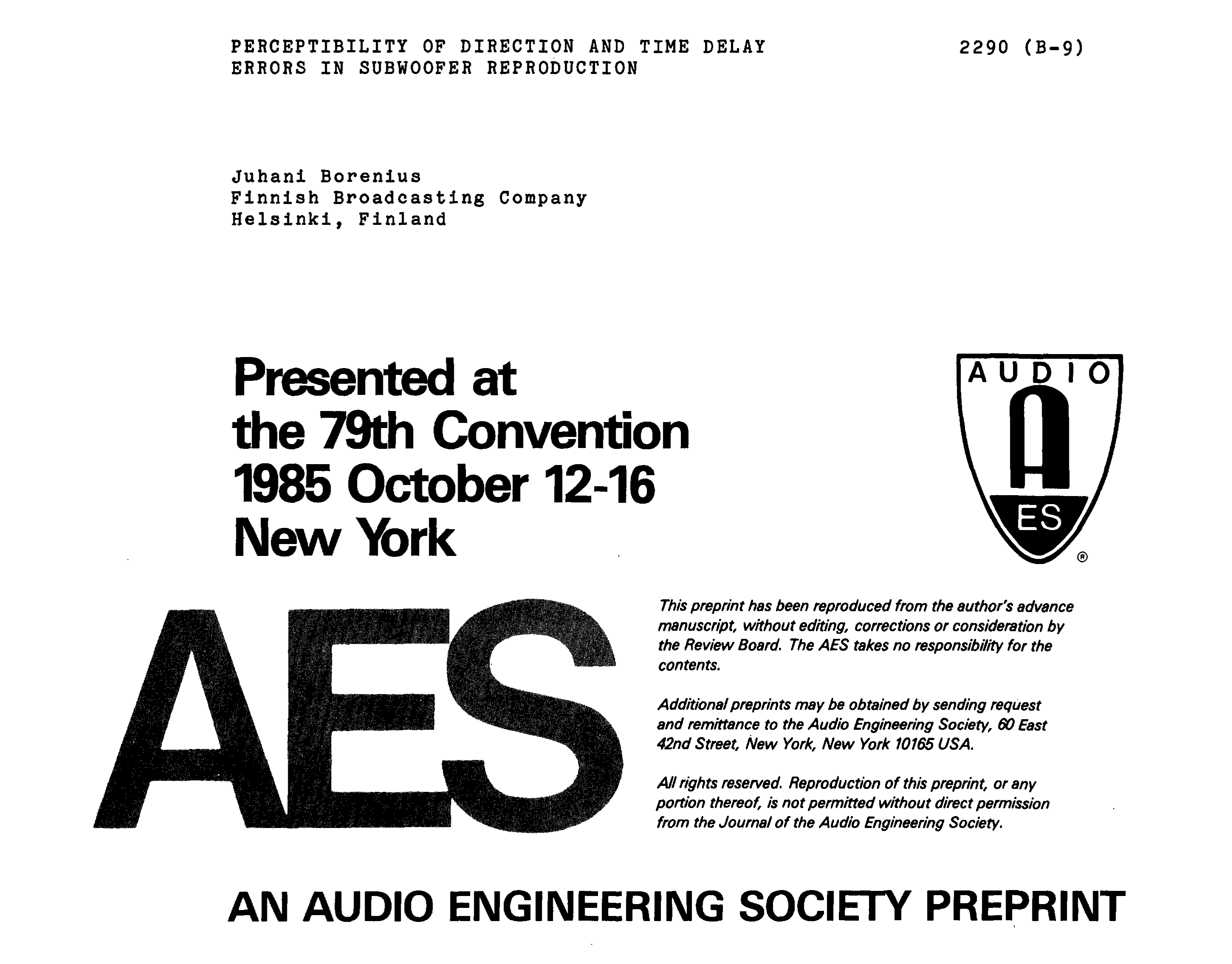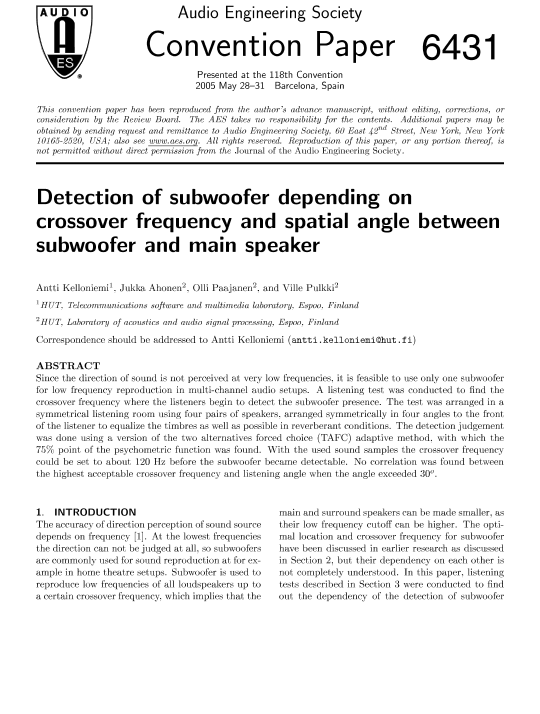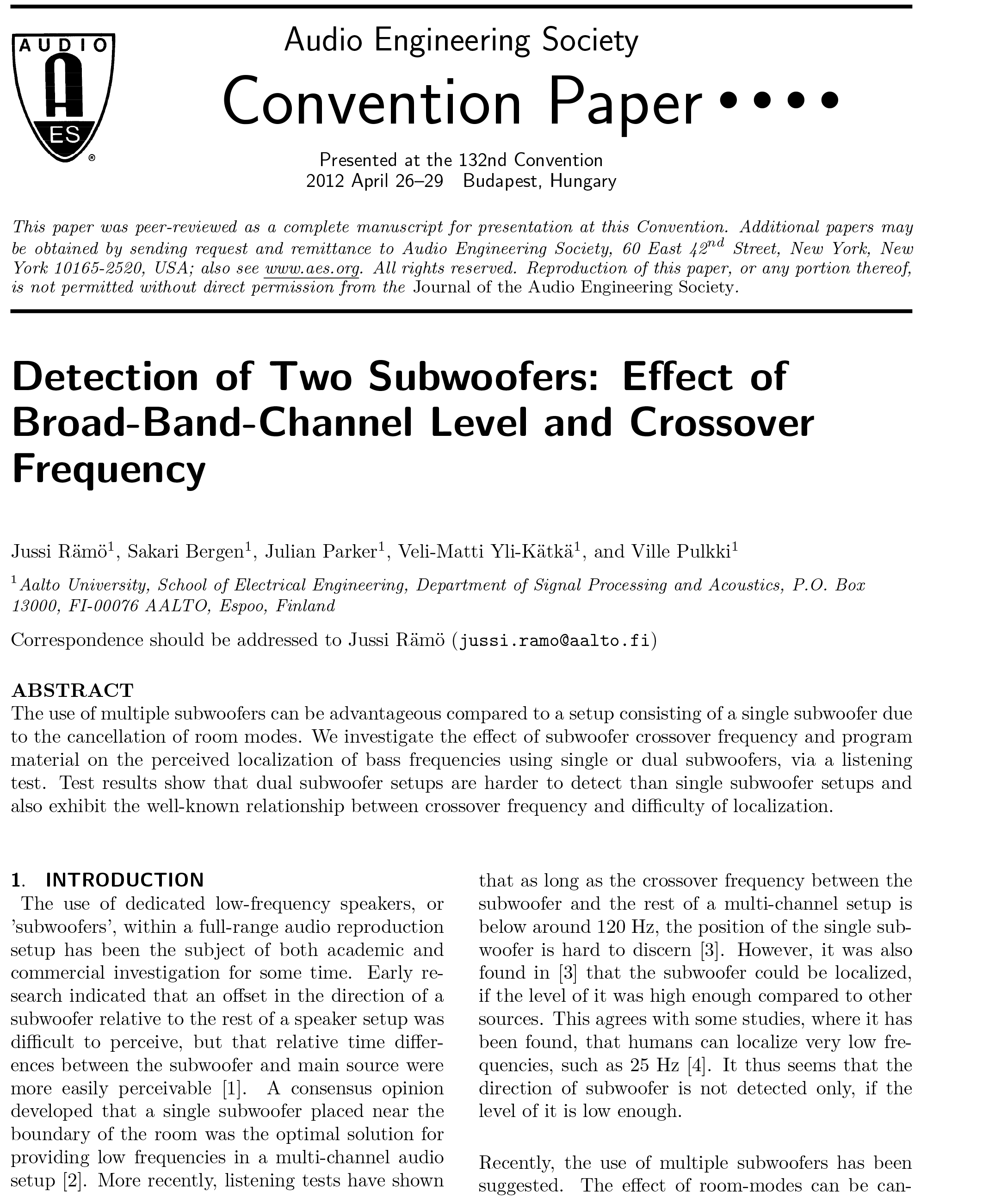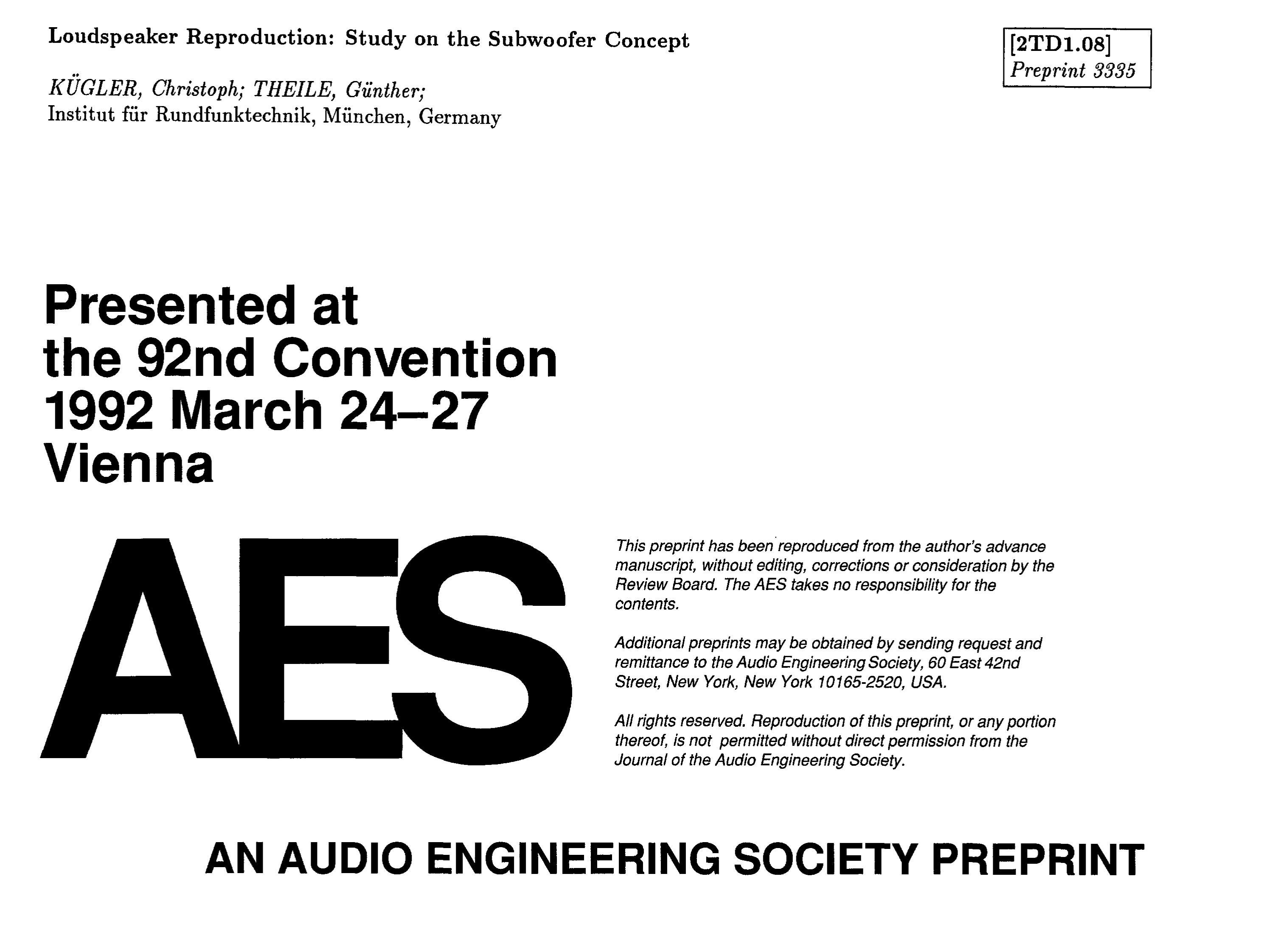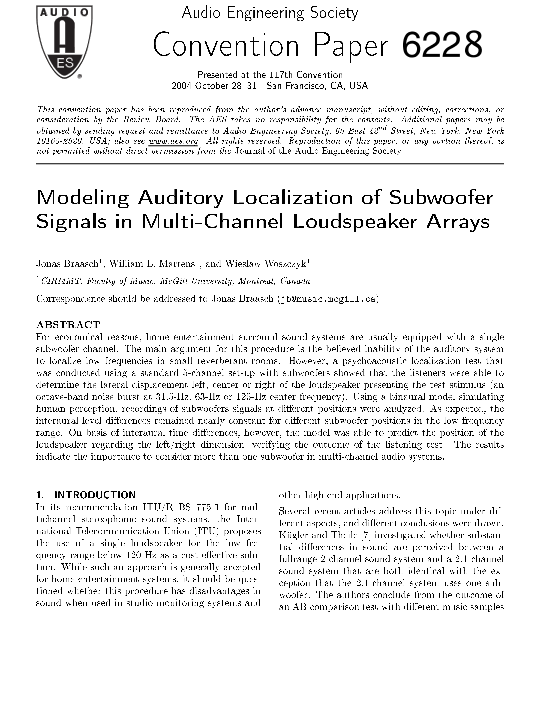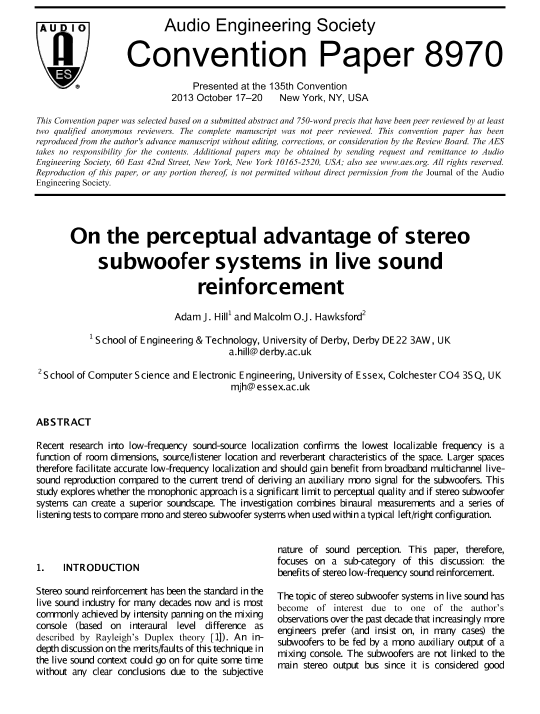Soundmixer
Senior Member
- Joined
- Mar 8, 2021
- Messages
- 433
- Likes
- 296
You sure it fails, or you just don't accept the results? I have asked you to support your notion with ANY study that there is stereo bass below 80hz. You have posted nothing but still insist there is. How can you dismiss one result while not providing support for your own?The Welti study fails on all accounts.
Is you have a legit study, please post it.
So let's just find something that breaks down your entire opinion.
"Inter-aural delay shifts the sound received by one ear as opposed to the other and introduces a phase difference between the ears. Phase denotes the particular point in the cycle of a sound or a waveform. Our ears are very sensitive to phase differences, more than the inter-aural delay itself: inter-aural delay is only perceptible when the sound reaches your ears, while phase differences still exist afterwards.
Unfortunately, phase differentiation fails when the frequencies are too low. For example, at the bottom of the human hearing range, the wavelength is almost 20 meters long. What does 20 cm - the average distance between our ears - represent compared to 20 meters? Not much, as a pure tone waveform won't significantly change over 1/100th of its cycle. As both of our ears will perceive a very similar signal, the sound will simply be interpreted as coming frontally, even though it comes from your side.
So, as the frequency drops below a critical frequency - usually around 80 Hz - it becomes very difficult to determine a sound's location. "
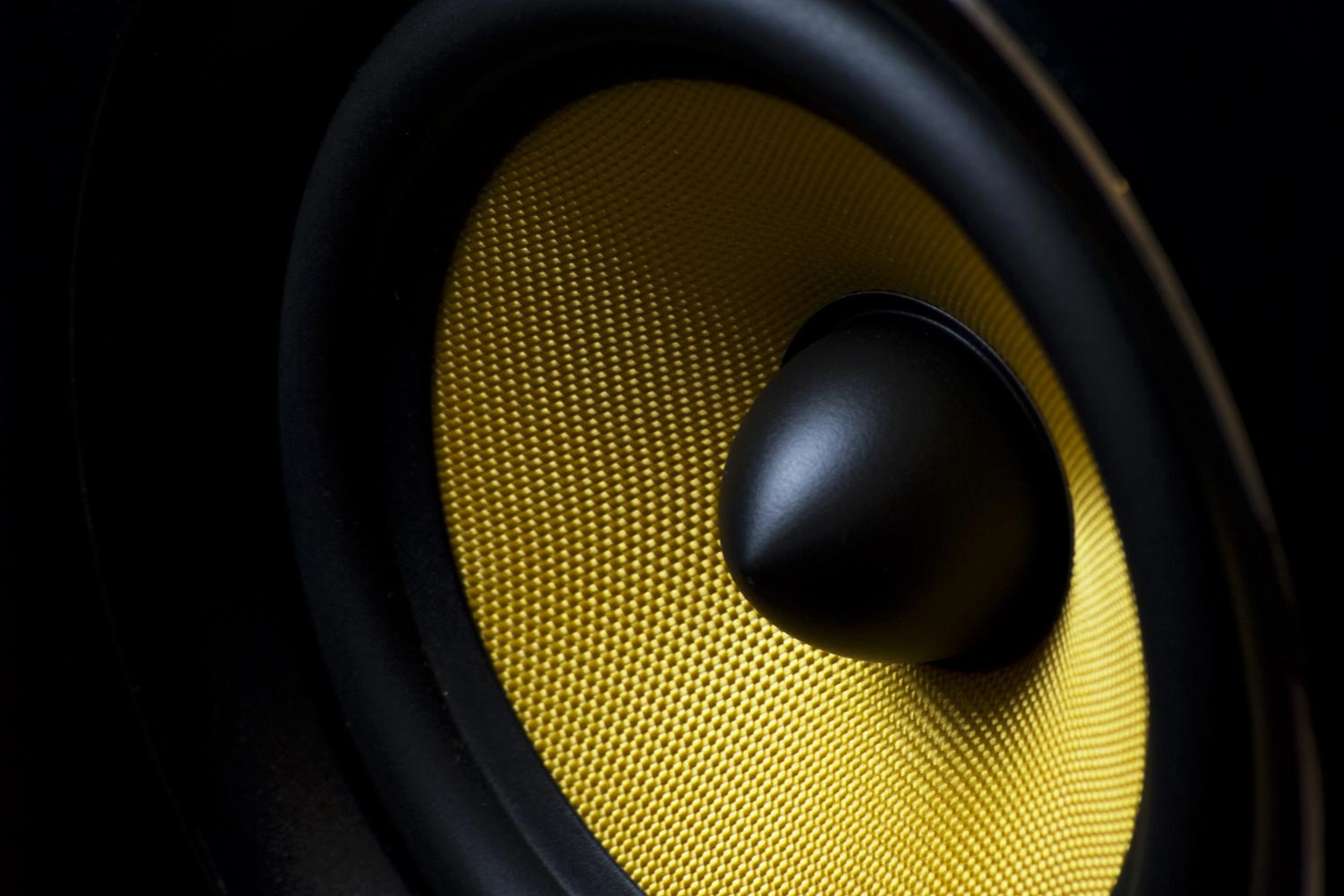
Low Frequency (Subwoofer) Sound Localization Test
Why you really don't want to hear where your low frequencies are coming from!
What this page is saying is once the wavelengths become so long there is no longer a perceived separation of channels (Interaural time difference), then it becomes difficult to hear stereo. The threshold of localization STARTS at 80hz and gets easier to ascertain as the frequency increases.

